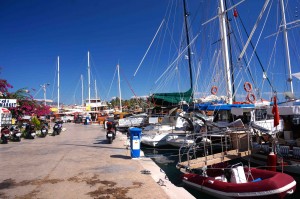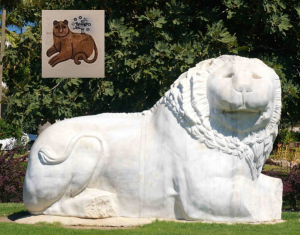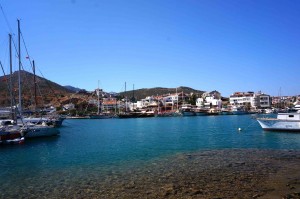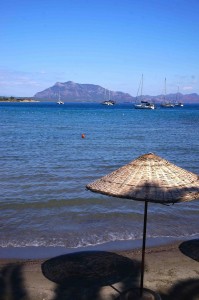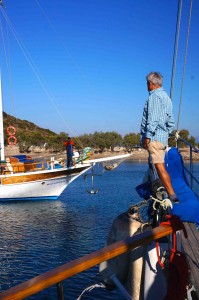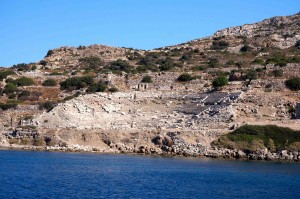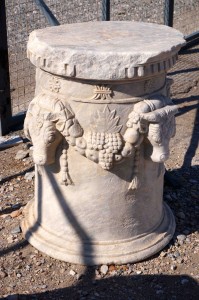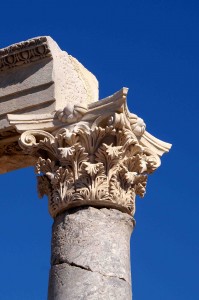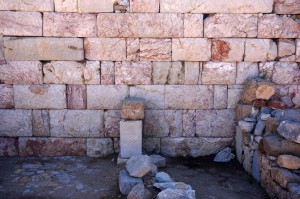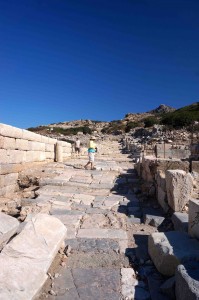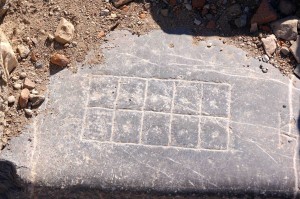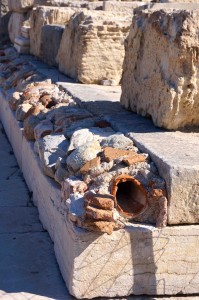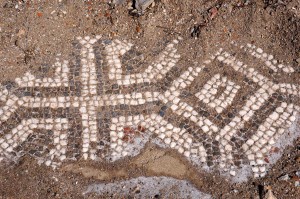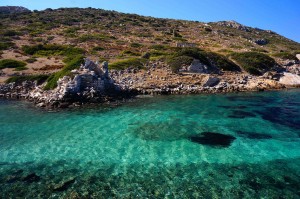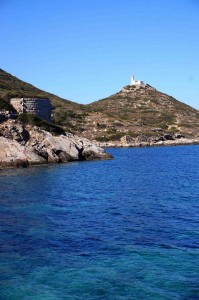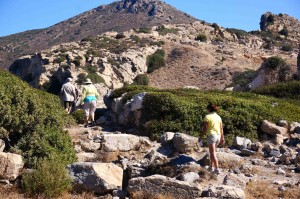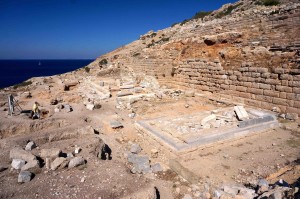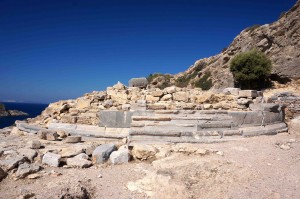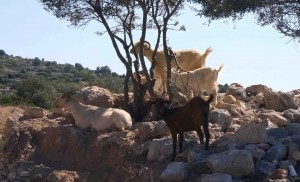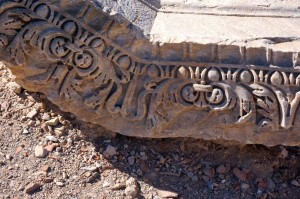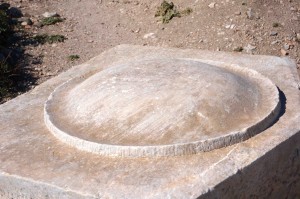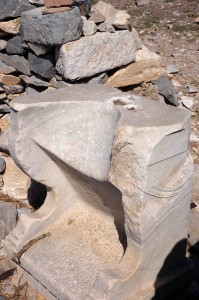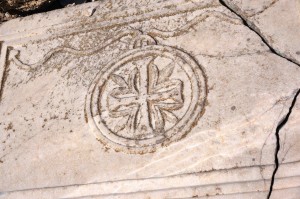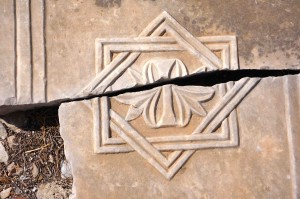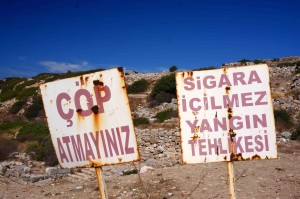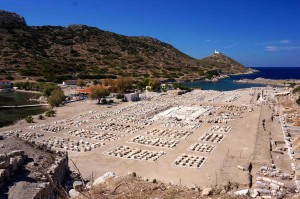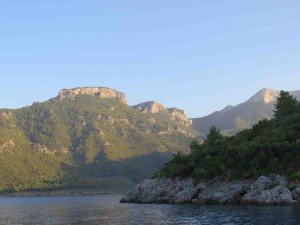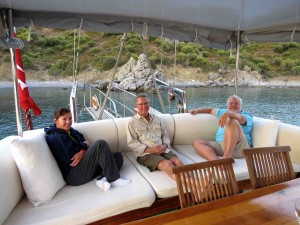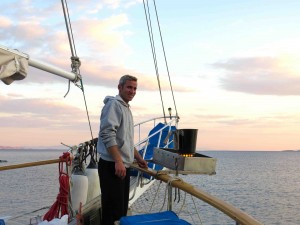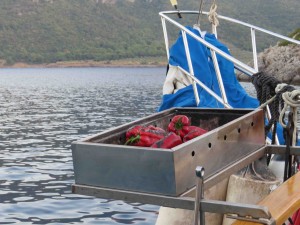After a restful night in Selimiye, we headed back out into the wind and high seas to head to Datca, the largest town on the Datca peninsula. Not much to talk about there; it is largely a town devoted to fishing and marinas (and the retail therapy opportunities associated with them). We spent the afternoon wandering around the waterfront and then left to find a peaceful cove for the night. Then it was time for some more swimming. The water here is beautiful and clear to at least 50 feet. It is a little brisk, but much warmer than Croatia.
The next morning we cruised up to the tip of the peninsula that marks the end of the Mediterranean and start of the Aegean Sea. It also is the site of what was a famous ancient city – Knidos. I had never heard about Knidos and the ruins aren’t terribly impressive compared to some others we have seen, but the size (over 20,000 residents at its peak) and scope of the city and the accomplishments of its residents was truly impressive. Knidos was initially settled around 3000 BC, probably because of its strategic location and two impressive harbors (that were useful for trade and hiding from storms). During the Hellenic Period, they affiliated with Sparta (remember the movie “300”?) and they experienced a lot of growth economically, scientifically, and culturally. Between the Greek and Roman periods they made great advances in medicine (one of their doctors became the personal physician to the King of Persia), architecture (one of the architects of Knidos went on to design/build the Lighthouse of Alexandria [one of the 7 Wonders of the Ancient World]), sculpture (some of their sculptors worked on the Mausoleum at Halikarnassas [another of the 7 Wonders of the Ancient World]), and agriculture (their sweet wine and oil) traded all over the Mediterranean basin). One other thing they innovated was tourism. It turns out that during the “boom times,” the city went out and bought a statue of Aphrodite that became quite famous. The city received lots of offers to buy the statue for some pretty outrageous prices, but the city fathers turned them down. Instead, they counted on people coming to visit it, which they did in droves! Ultimately (sometime between 400 and 700 AD), Knidos was abandoned. There are a number of theories as to why that happened: (1) several earthquakes hit the area and apparently drained their aquifer, (2) the advent of bigger, (3) faster boats caused a changed in the trade routes [that didn’t include Knidos], wine and oil became commoditized [thus severely reducing the prices], and (4) increased piracy in the area [especially after the Roman Empire fell]. Some interesting lessons for all our cities!
We had a great time hiking up the mountainside and taking in all the panoramic views, but it was time to move on to find another quiet cove for swimming, eating, and snoozing!
